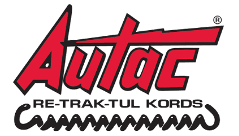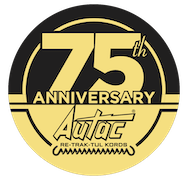In the world of electronics, telecommunication, and electrical applications, cables and cords play a vital role in connecting devices and ensuring smooth performance. Among them, curly power cords, retractable telephone cords, straight wires, coiled phone cords, straight flexible wires, and coiled curly cords hold a unique place because of their functionality, durability, and design. Each of these products serves a different purpose but often overlaps in industries like telecommunications, home electronics, and office setups. Below is a detailed overview of these cords and wires, their uses, benefits, and practical experiences.
1. Curly Power Cord
A curly power cord is a specially designed cable that stretches when pulled and retracts back into its original compact form when released. Its spiral or coiled structure makes it space-saving and user-friendly.
Features Of Curly Power Cords
- Made with flexible PVC or rubber material.
- Can extend up to 3–5 times their coiled length.
- Commonly equipped with durable copper conductors.
- Resistant to tangling compared to straight cords.
Applications
- Powering portable devices.
- Automotive and machinery industries where flexibility is required.
- Household appliances like irons, vacuum cleaners, and hair dryers.
- Medical devices for safe, clutter-free power connection.
The main advantage of a curly power cord is its ability to avoid clutter while providing long reach when necessary. For workplaces, this improves safety by reducing tripping hazards.
2. Retractable Telephone Cord
The retractable telephone cord is widely recognized from traditional landline telephones where the receiver connects to the base. Its coiled, stretchable design allows the user to move around while maintaining a connection.
Key Benefits
- Extends reach without cluttering the desk.
- Retracts back to avoid tangling when not stretched.
- Made with multiple twisted pairs of copper wires for clear voice transmission.
- Often comes with modular RJ11 connectors.
Modern Use
While mobile phones have reduced the use of landlines, retractable telephone cords are still used in offices, call centers, hotels, and hospitals. Their reliability and durability make them a low-maintenance option for wired communication.
3. Experience With The Straight Wire
When comparing coiled cords to straight wires, there are noticeable differences in practicality. A straight wire is simply a non-coiled cable that connects devices directly without flexibility in length.
Advantages Of Straight Wire
- Cost-effective and simple design.
- No loss of signal strength due to stretching.
- Easy to manufacture and install.
Limitations
- Tangling issues are common.
- Takes up more space in compact setups.
- Not flexible for portable or moving devices.
Personal and industrial experience shows that straight wires are best for fixed installations, like electrical wiring inside walls or permanent telephone setups. However, for environments that require frequent movement or flexible reach, coiled cords are preferred.
4. Coiled Phone Cord
A coiled phone cord is essentially a curly cord specifically designed for telephones. It allows users to move a few feet away from the phone base while keeping the receiver connected.
Characteristics
- Stretchable length, usually 6–12 feet when extended.
- Modular connectors (RJ9 or RJ11).
- Strong insulation to reduce noise interference.
Uses
- Desk phones in offices and homes.
- PBX systems in large organizations.
- Telecommunication devices where durability and mobility are needed.
5. Straight Flexible Wire
A straight flexible wire differs from ordinary rigid cables. It is made of fine strands of copper bundled together, covered with a soft insulating layer. This gives it both strength and flexibility.
Advantages
- Easy to bend without breaking.
- Long life span due to durability.
- Suitable for portable devices and moving machinery.
Applications
- Household appliances.
- Automotive wiring.
- Industrial machines that require frequent movement of wires.
6. Coiled Curly Cord
The term coiled curly cord is often used interchangeably with curly power cords and coiled phone cords. It refers to any spiral-designed cable that can stretch and retract.
Why Coiled Curly Cords Are Popular
- Save space compared to straight cords.
- Reduce clutter and tangling.
- Provide flexibility and mobility to users.
- Improve safety by minimizing loose cable lengths.
Industries Using Coiled Curly Cords
- Telecommunications.
- Consumer electronics.
- Automotive (charging and diagnostic tools).
- Medical equipment (heart monitors, patient monitoring systems).
Comparing Coiled And Straight Cords
| Feature | Coiled/Curly Cord | Straight Wire |
| Flexibility | High, stretches and retracts | Limited |
| Space-Saving | Yes, compact when not stretched | No, takes more space |
| Durability | High in moving environments | High in fixed setups |
| Use Case | Phones, appliances, portable devices | Permanent installations, wiring |
| Safety | Reduces tripping hazards | Can cause tangles/slack issues |
Conclusion
Cables and cords are often overlooked, yet they play an essential role in the functionality and efficiency of devices. Curly power cords, retractable telephone cords, coiled phone cords, straight flexible wires, and coiled curly cords all serve unique purposes across industries.




Recent Comments